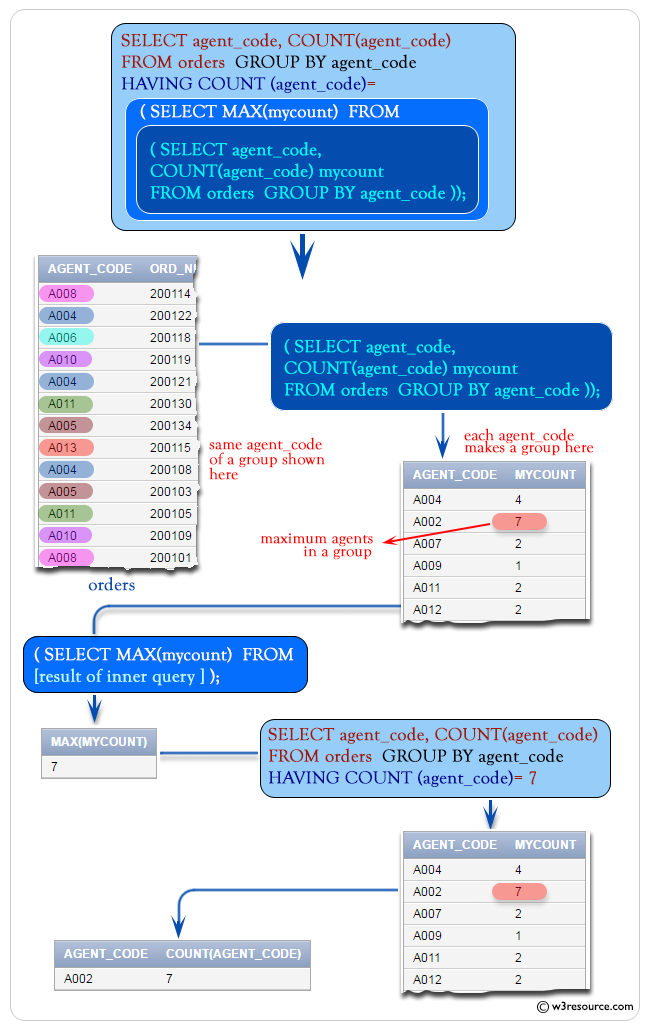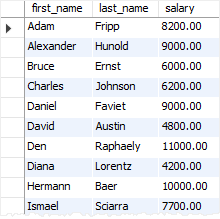SQL HOME SQL Intro SQL Syntax SQL Select SQL Select Distinct SQL Where SQL An Or, Not SQL Order By SQL Insert Into SQL Null Values SQL Update SQL Delete SQL Select Top SQL Min and Max SQL Count, Avg, Sum SQL Like SQL Wildcards SQL In SQL Between SQL Aliases SQL Joins SQL Inner Join SQL Left Join SQL Right Join SQL Full Join SQL Self Join SQL. APPLIES TO: SQL Server Azure SQL Database Azure Synapse Analytics ( SQL DW) Parallel Data Warehouse. An operator is a symbol specifying an action that is performed on one or more expressions. The following tables lists the operator categories that SQL Server uses.

These operators are used mainly in the WHERE clause, HAVING clause to filter the data to be selected. Operators are represented by special characters or by keywords. Example 5: SQL Not Equal operator and SQL Group By clause.
We can use SQL Not Equal operator in combination with the SQL Group By clause. Arithmetic operators run mathematical operations on two expressions of one or more data types. For more information about data type categories, see Transact- SQL Syntax Conventions. The ALL operator returns TRUE if all of the subquery values meet the condition. The SQL AN OR and NOT Operators.
The WHERE clause can be combined with AN OR, and NOT operators. The AND and OR operators are used to filter records based on more than one condition: The AND operator displays a record if all the conditions separated by AND are TRUE. So, this was all in SQL Operators. Hope you like our explanation.
The above describes the main toolset of operators you’ll nee but if you’re interested in learning more checkout the full list of PostgreSQL operators. SQL also supports set operators (UNION, UNION ALL, INTERSECT, and MINUS), which combine sets of rows returned by queries, rather than individual data items. You’ve learned a huge chunk of SQL so far, keep it up!
Sql comparison operators with examples. I am checking some old SQL Statements for the purpose of documenting them and probably enhancing them. The DBMS is Oracle I did not understand a statement which read. Logical operators test for the truth of some condition. Learn all about SQL operators here.
Summary: in this tutorial, you will learn about SQL comparison operators and how to use them to form conditions for filtering data. SQL Comparison operator : A comparison or relational operator is a mathematical symbol which is used to compare between two values. This SQL tutorial explores all of the comparison operators used in SQL to test for equality and inequality, as well as the more advanced operators. The LIKE operator is used in a WHERE clause to search for a specified pattern in a column.
This article provides details about using these operators. NULL has no value, and so cannot be compared using the scalar value operators. Hence, SQL has special IS NULL and IS NOT NULL predicates for dealing with NULL. SQL statements generally contain some reserved words or characters that are used to perform operations such as comparison and arithmetical operations etc. These reserved words or characters are known as operators.
The important is how to use this operators in SQL. However, you have to use parentheses. NOTE: If we forget the parentheses, then we will end up with the wrong. SQL operators are used to perform certain operations on the values and expressions used in SQL script in SAP HANA. Using the operators , one can perform calculations, comparisons, string operations, set operations and arithmetic operations on the SQL statements.

SQL Tutorial - SQL IN, NOT IN operators are used with SELECT, UPDATE statements etc. Here we have explained IN, NOT IN operators etc.
Inga kommentarer:
Skicka en kommentar
Obs! Endast bloggmedlemmar kan kommentera.